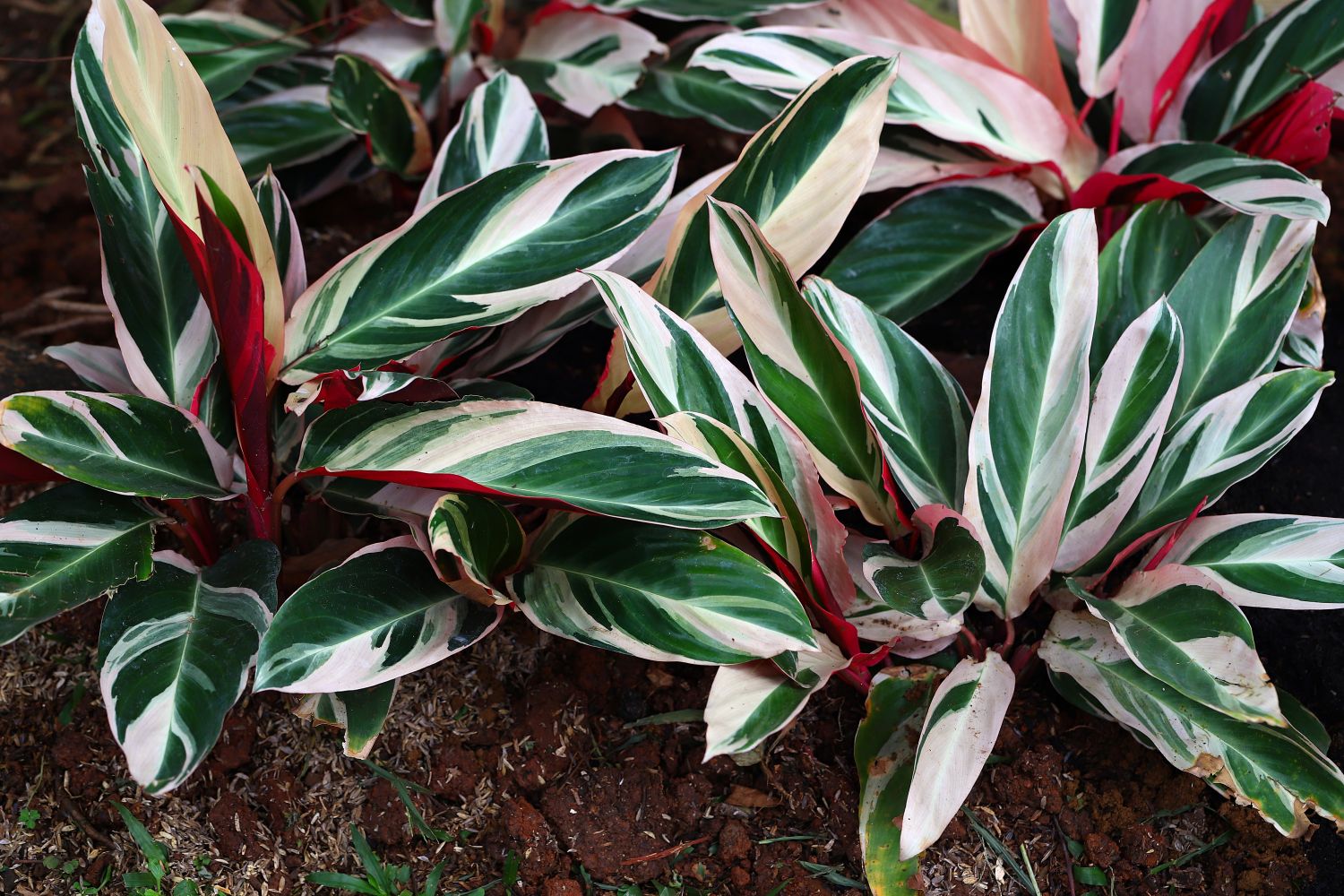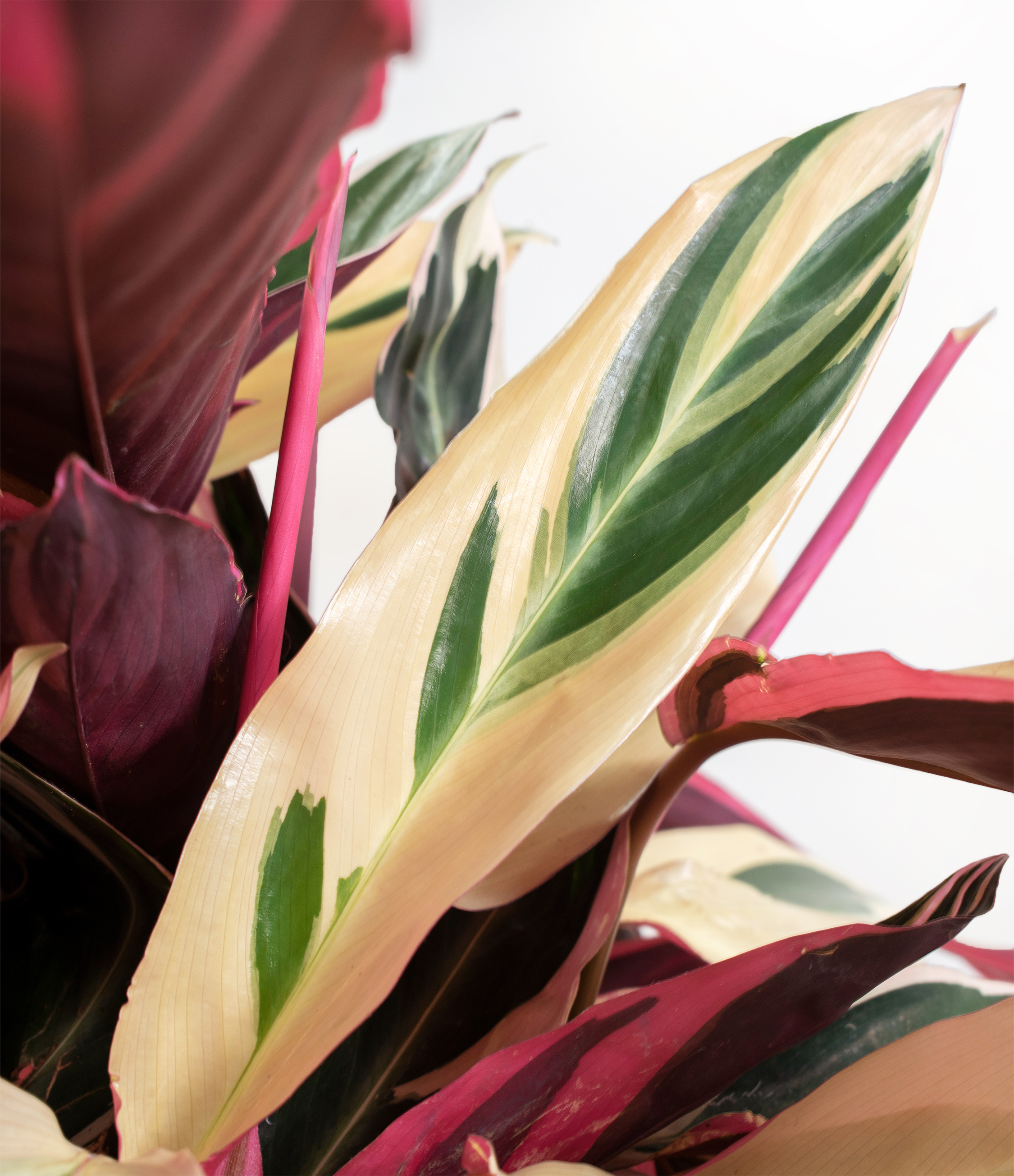Absolutely! Here’s a comprehensive 3000-word article about Calathea Triostar, designed with your specifications, using `
` and `
` tags instead of “.
Calathea Triostar, also known as Stromanthe sanguinea ‘Triostar’ or ‘Tricolor’, is a captivating houseplant renowned for its striking variegated leaves. This tropical beauty, hailing from the rainforests of Brazil, is a member of the Marantaceae family, often referred to as the prayer plant family due to its unique leaf movements. Its vibrant pink, cream, and green patterns make it a highly sought-after addition to any indoor garden. However, its beauty comes with a need for specific care to ensure it thrives.

Calathea Triostar’s natural habitat is the humid understory of tropical rainforests. This environment provides the plant with consistent moisture, filtered sunlight, and warm temperatures. Understanding these conditions is crucial for replicating them in your home.
Leaf Characteristics
The most distinctive feature of the Calathea Triostar is its leaves. Each leaf is a masterpiece, showcasing a blend of dark green, creamy white, and vibrant pink hues. The underside of the leaves often displays a deep burgundy or purplish-red, adding another layer of visual interest. The patterns on the leaves are unique to each plant, making every Triostar a one-of-a-kind specimen.
Prayer Plant Behavior
Like other members of the Marantaceae family, Calathea Triostar exhibits nyctinasty, the circadian rhythmic nastic movement of plants in response to the onset of darkness. During the day, the leaves spread out to capture sunlight, and at night, they fold upwards, resembling praying hands. This fascinating behavior adds a dynamic element to the plant’s appeal.
Cultivating Calathea Triostar: Essential Care Tips
While Calathea Triostar is a stunning addition to any indoor space, it requires specific care to thrive. Replicating its natural habitat is key to its success.
Light Requirements

Calathea Triostar prefers bright, indirect light. Direct sunlight can scorch its delicate leaves, causing them to fade or burn. A location near an east- or north-facing window is ideal. You can also use sheer curtains to filter sunlight if placing it near a south- or west-facing window.
Watering Needs
Consistent moisture is crucial for Calathea Triostar. The soil should be kept consistently moist but not waterlogged. Overwatering can lead to root rot, a common problem for this plant. Water when the top inch of soil feels slightly dry. Using distilled or filtered water is recommended, as tap water can contain minerals that may harm the plant.
Humidity and Temperature
Calathea Triostar thrives in high humidity, mimicking its tropical rainforest environment. Aim for humidity levels between 60-80%. You can increase humidity by using a humidifier, placing the plant on a pebble tray filled with water, or grouping it with other humidity-loving plants. Temperatures should be maintained between 65-80°F (18-27°C). Avoid exposing the plant to temperatures below 60°F (15°C) or sudden temperature fluctuations.
Soil and Repotting
Use a well-draining, peat-based potting mix that retains moisture without becoming waterlogged. A mixture of potting soil, perlite, and orchid bark can provide the ideal balance. Repot the Calathea Triostar every 1-2 years, or when it outgrows its current pot. Choose a pot that is slightly larger than the previous one to allow for root growth.
Fertilizing

Feed your Calathea Triostar with a balanced liquid fertilizer diluted to half strength every 4-6 weeks during the growing season (spring and summer). Avoid fertilizing during the dormant season (fall and winter).
Common Issues and Solutions
Despite careful care, Calathea Triostar can encounter several common issues. Understanding these problems and their solutions is essential for maintaining a healthy plant.
Brown Leaf Tips
Brown leaf tips are often a sign of low humidity or dry soil. Increase humidity and ensure the soil remains consistently moist.
Yellowing Leaves
Yellowing leaves can indicate overwatering, poor drainage, or nutrient deficiencies. Check the soil moisture, ensure proper drainage, and fertilize appropriately.
Pest Infestations
Calathea Triostar can be susceptible to pests like spider mites, mealybugs, and aphids. Regularly inspect the plant for signs of infestation and treat with insecticidal soap or neem oil.
Root Rot
Root rot is a common issue caused by overwatering. Ensure proper drainage and allow the soil to dry slightly between waterings. If root rot occurs, repot the plant with fresh soil after trimming any affected roots.
Fading Colors
Fading colors can result from exposure to direct sunlight. Move the plant to a location with bright, indirect light.
Propagation Techniques
Propagating Calathea Triostar can be a rewarding experience. The most common method is division, which involves separating the plant’s rhizomes.
Division Method
1. Remove the plant from its pot and gently shake off excess soil.
2. Carefully separate the rhizomes, ensuring each division has healthy roots and leaves.
3. Plant each division in a separate pot filled with well-draining potting mix.
4. Water thoroughly and place the pots in a warm, humid location.
Calathea Triostar in Interior Design
Calathea Triostar’s striking foliage makes it a popular choice for interior design. Its vibrant colors and unique patterns can add a touch of tropical elegance to any room.
Placement and Styling
Place Calathea Triostar in areas where its beauty can be fully appreciated, such as living rooms, bedrooms, or bathrooms. Its prayer plant behavior adds a dynamic element, making it a conversation starter. Style it in decorative pots that complement its vibrant colors.
Air Purification
Like many houseplants, Calathea Triostar can help purify the air by removing toxins. This makes it a functional and aesthetically pleasing addition to indoor spaces.
Calathea Triostar Varieties and Related Plants
While Calathea Triostar is a standout, other Calathea varieties offer equally stunning foliage.
Calathea Ornata (Pinstripe Calathea)
Known for its striking pink stripes on dark green leaves.
Calathea Makoyana (Peacock Plant)
Features intricate patterns that resemble peacock feathers.
Calathea Lancifolia (Rattlesnake Plant)
Showcases elongated leaves with wavy edges and contrasting patterns.
The Joy of Calathea Triostar
Calathea Triostar is more than just a houseplant; it’s a living piece of art that brings a touch of the tropics into your home. Its vibrant colors, unique patterns, and prayer plant behavior make it a captivating addition to any indoor garden. While it requires specific care, the rewards of cultivating this beautiful plant are well worth the effort.
By understanding its origins, replicating its natural habitat, and addressing common issues, you can ensure your Calathea Triostar thrives and adds a touch of tropical elegance to your living space. The joy of watching its leaves unfold and fold in response to the rhythm of the day and night is a unique and rewarding experience for any plant enthusiast.

